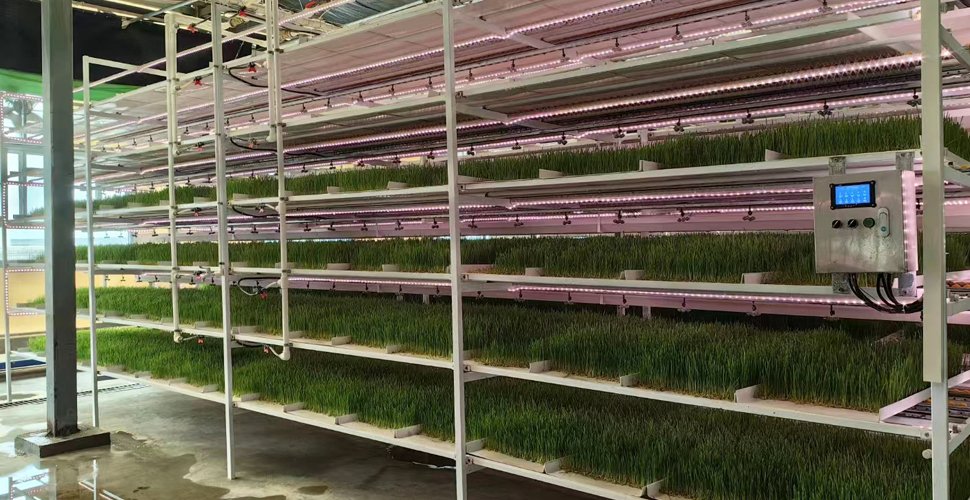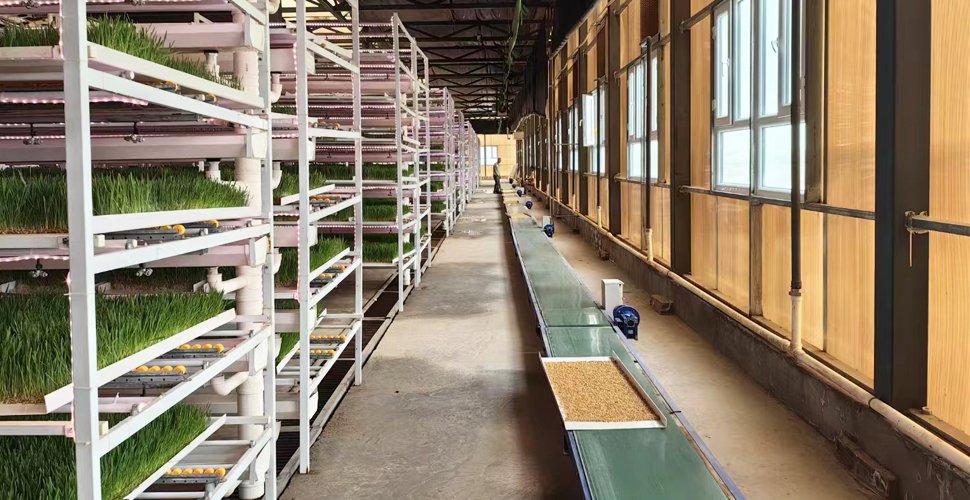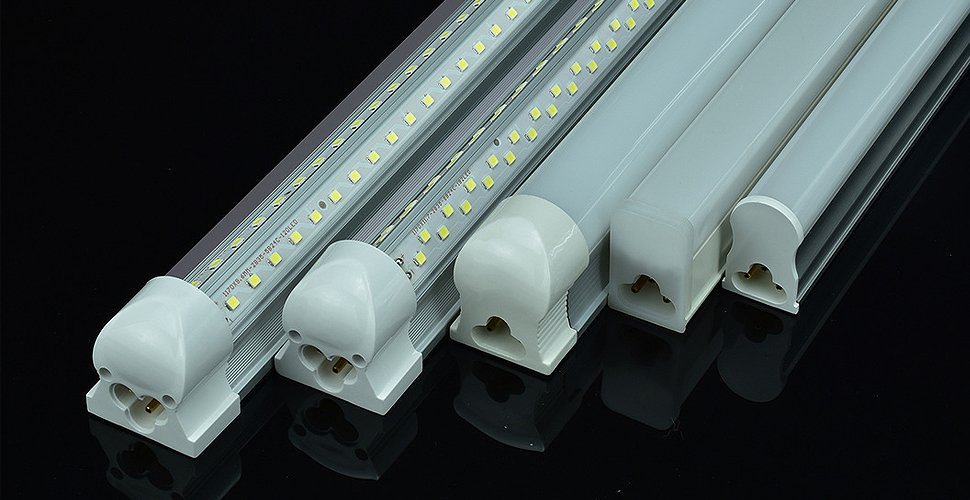As an important ecosystem, the level of grass production in grasslands directly determines the changes in grassland ecology and herders’ livelihoods.
However, limited by traditional grass growing techniques and natural conditions, there have been many grassland areas in northern China, and even in countries around the world, with varying degrees of grass shortage.
The limited availability of forage is not sufficient to fulfill the basic requirements of herbivores for grass. This results in varied levels of grassland ecological decline, which greatly hinders the progress of local livestock farming.
Fortunately, there is cutting-edge technology called LED grow light planting Ve commercial fodder systems that can significantly boost grass production and enhance forage production. This solution effectively addresses the issues of forage shortage and ecological degradation in grassland areas.
Additionally, it improves the ability of grasslands to adapt to climate change and provides technical assistance to protect the ecological environment of grasslands and the livelihoods of herders.
This article will provide a thorough analysis of the technology behind LED plant light grass planting. We will delve into the technical principles and discuss the challenges facing grass supply in the Aksu region of Xinjiang, China. Keep reading to gain a better understanding of this important topic.

Current Situation and Problems of Grass Supply in the Aksu Region
The Aksu region of Xinjiang, China boasts of a vast pasture area, but the growth of grass is severely limited due to drought and low rainfall.
The exponential rise in the number of livestock, owing to the growth of animal husbandry, has created immense pressure on the already scarce grass supply in the region.
The current situation of grass supply in the Aksu region and the main problems faced are as follows.
- Grass yield is small. The Aksu region boasts 530 million mu of grassland, but its dry and rainy climate results in an annual average yield of only about 3 kg per mu, with limited growth.
- Rapid growth in livestock numbers. In 2018, the Aksu region had a livestock population of 10.68 million sheep and 2.06 million cattle. Over the past decade, the number of sheep has increased by 33%, while the number of cattle has increased by 23%.
Due to this growth in livestock, there has been a significant increase in demand for forage.
- Grasslands face varying degrees of overload. Currently, about 80% of the pastures in the Aksu region are in varying degrees of overload, and 33% are experiencing mild pasture degradation, which will directly affect grass production and quality.
- Annual grass production fluctuates greatly. The Aksu region experienced significant fluctuations in grass production, with a decline of 22% in 2015 and a further 27% in 2017. As a result, meeting the demand for livestock is impossible without resorting to external purchases of grass.
- Other problems. The Aksu region’s grass production has been impacted due to the inadequate coverage of grassland vegetation and limited artificial seeding and improvement efforts.
We can see that The Aksu region is facing a critical issue of low grass production and high demand for livestock. This hindrance is impeding the development of the livestock industry. Relying solely on existing grassland resources and traditional grazing methods is insufficient to achieve the necessary balance between supply and demand.
It is imperative to adopt new technologies and methods to increase forage output and stimulate the production potential of grasslands, resulting in higher and more stable grass output.

Can You Grow Grass with Grow Lights?
LED grow lights called Grassland Light can promote the growth of pasture grass, improving the quality and yield of grasslands. They are a modern and innovative way to grow plants indoors and give new hope to farmers and ranchers.
Instead of relying on natural sunlight, these lights use artificial light to achieve precise indoor planting. With this technology, you can produce crops all year round, without being limited by natural conditions like traditional farming.
LED plant lights offer many benefits, including a long fertility cycle, high seeding efficiency, and high and stable grass production. Additionally, they allow for a wide range of seed selection and produce high-quality crops.
This is a new method of producing forage in the Aksu region that can help address the current imbalance between supply and demand. Promoting this method could have a significant impact and drive improvements in the forage industry.
- LEDs provide red and blue light to promote photosynthesis and grass growth.
Plant growth requires specific types of light, such as blue and red light, which are provided by LED plant lights. Blue light assists in chlorophyll formation and photosynthesis, while red light aids in cell division and overall plant growth.
By strengthening the photosynthesis process and speeding up growth and development, these lights can improve the yield of plants.
- Adjust light time as needed for flexible growth management.
With LED plant lights, you can easily adjust the amount of light your grass receives based on its growth stage. Increase the light time during seed germination and avoid excessive light during the growth period for optimal results.
Additionally, you can extend the daylight hours to promote longer growth cycles and more photosynthesis, resulting in higher biomass accumulation and yield.
- Precise control to create the best living environment.
With the LED plant light planting device, you can have total control over the light, temperature, humidity, and other fertility conditions.
This ensures that the best possible environment for grass growth is created, resulting in significantly increased efficiency and productivity. As a result, you can expect a higher yield per unit space.
- Planting grass efficiently and promoting higher yields per unit area.
These grow lights offer high energy conversion efficiency and shorter fertility cycles, allowing for more grass to be produced per unit area.
- Save growing costs and reduce resource waste.
Planting grass using LED technology is a cost-effective method leading to higher yields using limited space with vertical planting systems.
This method intensifies grass planting, reducing costs and minimizing resource waste, ultimately resulting in increased yields.

How to Grow Grass Indoors?
To ensure a consistent supply of grass for livestock, LED plant light grass planting technology is used.
This technology involves selecting the appropriate LED spectrum and controlling the light fixture’s position and illumination level to create optimal growing conditions.
By combining this with temperature and humidity control and fertility management, farmers can maximize their grass production potential and achieve higher yields. Following these technical guidelines is crucial for successful grass planting.
Consider the LED Spectrum
When selecting LED lighting for grass growth, it is important to consider the combination of blue and red light.
Blue light aids in chlorophyll production and photosynthesis, while red light supports cell division and plant growth.
The optimal spectrum for photosynthesis can be achieved through a combination of the two, with recommended wavelengths of 440-460nm for blue light and 620-630nm for red light.
Determine the Appropriate Light Level
To ensure optimal grass growth, it’s important to determine the appropriate light level.
Typically, a light level of 20-40W/m2 is suitable, as anything higher than 50W/m2 can actually inhibit growth and reduce yield.
Adjust the light level based on the specific grass species and growth stage – for instance, increase to 30-35W/m2 during germination and decrease to 25-30W/m2 during blooming.
A Right Lighting Installation Location
When installing an LED grow light, it’s important to choose the right location and height.
For the best results, install the luminaire at a height of 1-1.5 meters above the grass surface.
If it’s installed too high, the light intensity will be reduced, and if it’s too low, there will be uneven light. Each luminaire should cover an area of 1-3 square meters.
Regular Watering and Fertilizing
Even though indoor grasses require less watering and fertilization, it’s still important to give them proper care for optimal growth.
They need about 0.5-2 liters of water per day and a weekly application of a diluted 25-50% conventional fertilizer. This will provide them with enough water and nutrients.
Light Time Management
Efficient time management is key. By regulating the on/off time of the LED plant light, you can control the light process of the grass for 12-16 hours.
It’s important to adjust this time frame based on the grass species and fertility period to avoid overexposure to light. For example, 16 hours for seed germination and 12 hours for full flowering.

Temperature and Humidity Management
To ensure optimal grass growth in the LED planting room, it is important to maintain a temperature range of 20-28°C and a humidity range of 60-80%.
To achieve this, it is recommended to use an extractor fan and dehumidifier to regulate the environment.
Grass Period Management
Managing grass growth involves various actions, such as transplanting, harvesting, and reseeding, based on the fertility traits of the grasses.
These actions aim to reduce the planting interval and increase overall yield. By controlling the planting cycle of each batch to 25-30 days, a higher total yield can be achieved.
Use Shallow Containers for Planting
When it comes to planting grass, it’s best to use shallow containers.
A depth of 10-15cm is appropriate for these types of pots. Shallow containers allow for better light penetration and root oxidation, which are both important for healthy grass growth.
Suitable Planting Density
To ensure proper growth, it’s important to adopt the right planting density and spacing for indoor grass.
Typically, a density of 36-64 plants per square meter is suitable. However, it’s important to avoid overcrowding which can hinder growth and light absorption. A plant spacing of 10-15cm is recommended for optimal results.
Rational Use of Growing Space
Efficient use of planting space involves LED grass planting, which doesn’t require much land. To optimize utilization, vertical planting can be utilized as a means of increasing production.
Choose High-yield Grass Seeds
Grasses like clover, ryegrass, and sandy fescue are the best grass to grow indoors for farmers looking to provide high-quality nutrition for their cattle and sheep.
These grasses are known for their high yields and can help ensure overall success in livestock production.

What Can We Do to Help Grasslands?
The extreme scarcity of grassland resources in the Aksu region is just one example.
The conventional grazing pattern makes it difficult to supply the increased demand for supply from animals, resulting in more significant grazing productivity restrictions.
It is our hope that LED plant light grass planting technology will be adopted by the government and herders in the Aksu region in order to speed up the renewal of grassland resources and improve the supply of forage.
To achieve this, the government should increase its efforts in promoting this technology and its application among herders through technical training and demonstration.
Additionally, the cost of using this technology should be reduced through financial subsidies and other means to encourage more herders to adopt this advanced grass-planting method.
Utilizing technology more effectively is crucial to addressing the shortage of grassland resources and promoting sustainable pastoral production.
LED plant lights offer an efficient and sustainable approach to promoting pastoral development in regions with limited grassland resources.
It is expected that the use of these lights will become increasingly popular, and we must act now to implement this solution.
Are you looking for a commercial fodder system? Look no further than Auxgrow! We’ll help you optimize your space and grow plants in three dimensions with cutting-edge technology. Our reliable LED grow lights will also ensure your crops thrive.
Jayes
AUXGROW'da Dijital Pazarlama Müdürü olan Jayes, hidrofonik sistemlere olan tutkusunu LED bitki yetiştirme lambaları konusundaki uzmanlığıyla birleştiriyor. Jayes, uygulamalı deneyimi ve derin anlayışıyla, sürdürülebilir tarım dünyasında size rehberlik ediyor.






